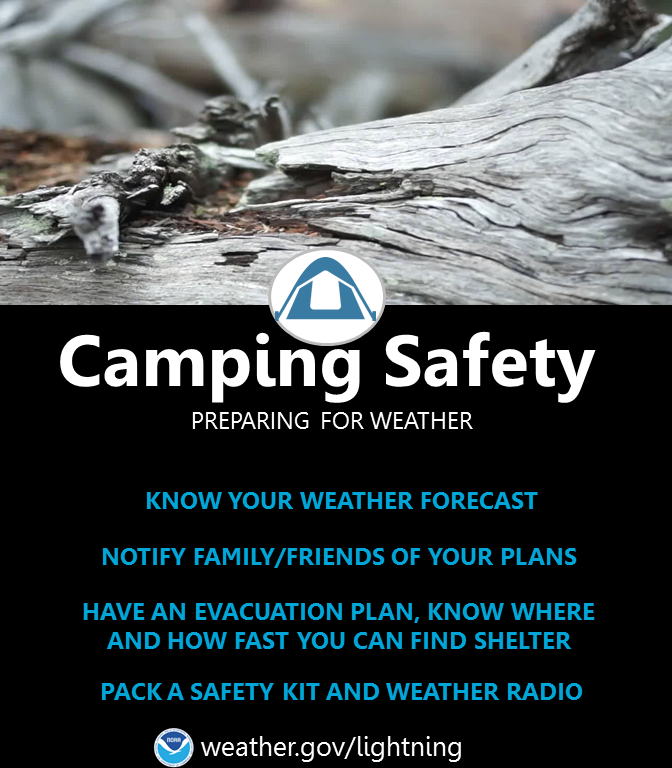Please help the National Weather Service spread these important safety messages on social media! Everyone is welcome to use the text and images provided below to help the NWS build a Weather-Ready Nation.
Facebook
“I need to breath, I can’t give up, I need to breathe.” Nathalie survived, but boating and lightning can be a deadly combination. Check the forecast before you go out, and head to shore at the first sign of a storm. weather.gov/safety/lightning
Twitter
“I need to breath, I can’t give up, I need to breathe.” Nathalie survived, but boating and lightning can be a deadly combination. Check the forecast before you go out, and head to shore at the first sign of a storm. weather.gov/safety/lightning #WeatherReady
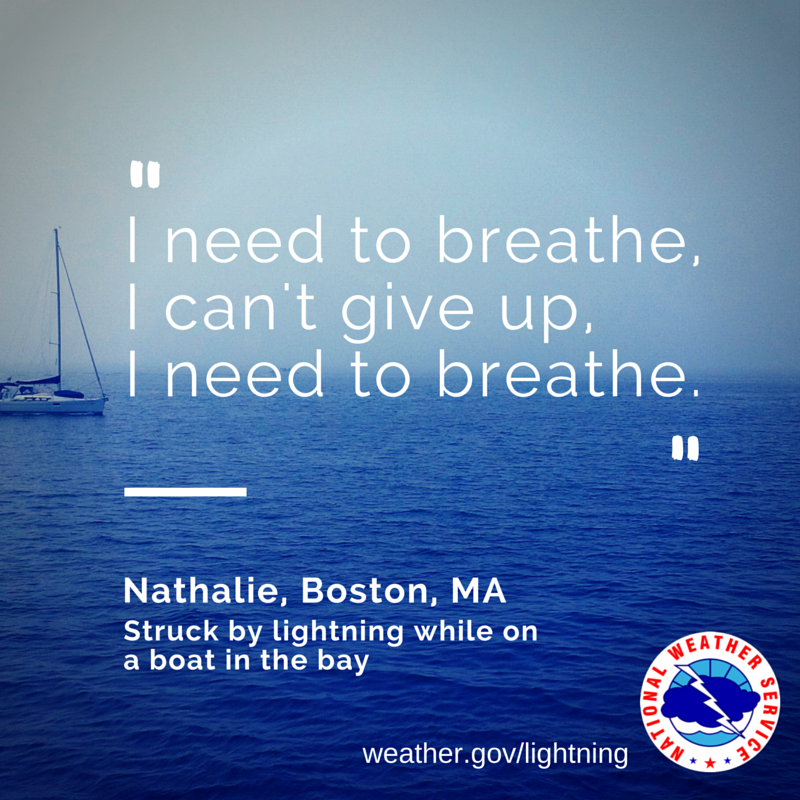
Facebook
Did you know that lightning is hotter than the surface of the Sun? Stay Weather-Ready and learn about lightning science at weather.gov/safety/lightning-science
Twitter
Did you know that lightning is hotter than the surface of the Sun? Stay #WeatherReady and learn about #LightningScience at weather.gov/safety/lightning-science
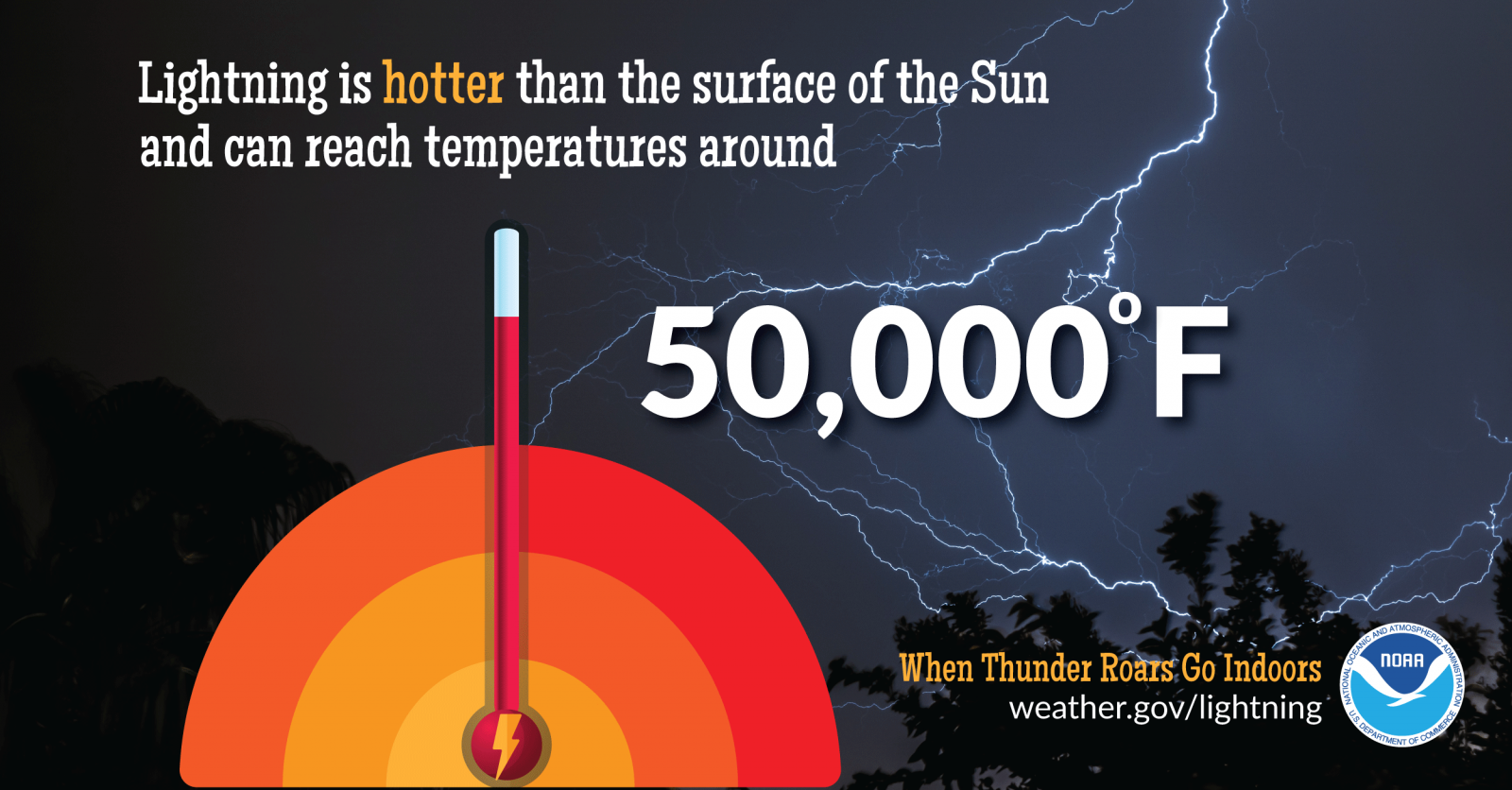
Facebook
Did you know there are many different kinds of lightning? Learn all about them in the graphic below or by visiting nssl.noaa.gov/education/svrwx101/lightning/types/
Twitter
Did you know there are many different kinds of lightning? Learn all about them in the graphic below or by visiting nssl.noaa.gov/education/svrwx101/lightning/types/ #WeatherReady
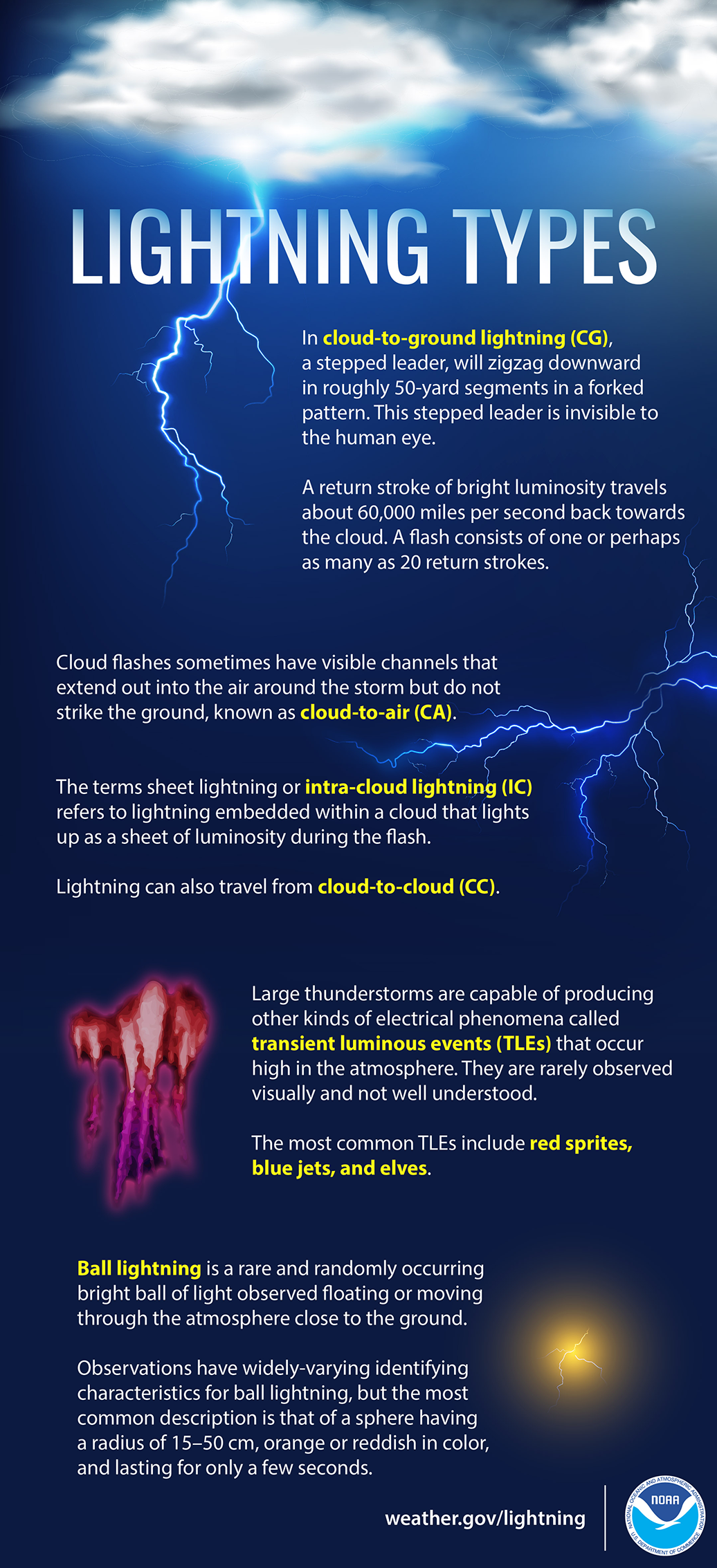
Facebook
Lightning strikes the United States about 25 million times each year! Thunderstorms produce deadly lightning capable of striking up to 10 miles away from the storm — so, even if you don't see rain you could be in harm’s way. Remember this simple message: When Thunder Roars, Go Indoors! weather.gov/safety/lightning
Twitter
Thunderstorms can produce deadly lightning strikes up to 10 miles away. When Thunder Roars, Go Indoors! weather.gov/safety/lightning #WeatherReady
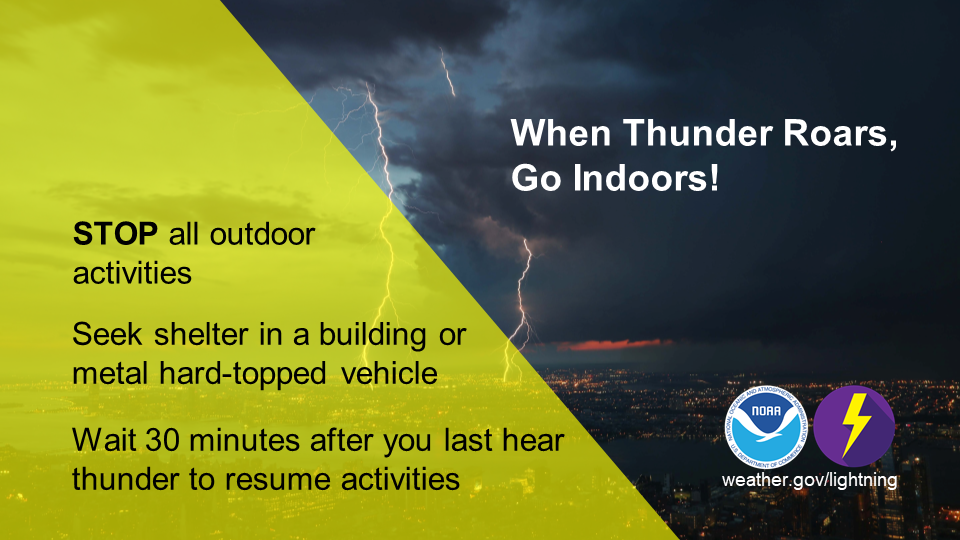
Facebook
See a Flash, Dash Inside! Thunderstorms produce deadly lightning capable of striking up to 10 miles away from the storm — so, even if you don't see rain you could be in harm’s way. Remember this simple message: See a Flash, Dash Inside! weather.gov/safety/lightning
Twitter
Thunderstorms can produce deadly lightning strikes up to 10 miles away. Remember this simple message: See a Flash, Dash Inside!weather.gov/safety/lightning #WeatherReady #SeeAFlashDashInside
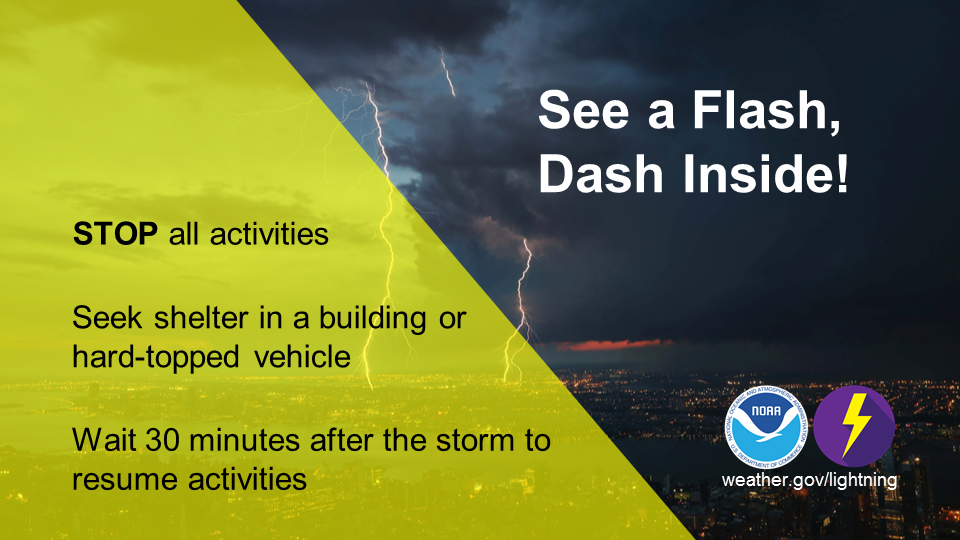
Facebook
A partnership between NOAA and the Deaf and Hard of Hearing community has yielded a fresh safety campaign slogan to protect more people from lightning strikes this season. “See a Flash, Dash Inside!” At the first sight of lightning, take shelter immediately. noaa.gov/stories/see-flash-dash-inside-new-lightning-safety-slogan-rolls-out #LightningSafety #SeeAFlashDashInside
Twitter
See a Flash, Dash Inside! noaa.gov/stories/see-flash-dash-inside-new-lightning-safety-slogan-rolls-out #LightningSafety #SeeAFlashDashInside
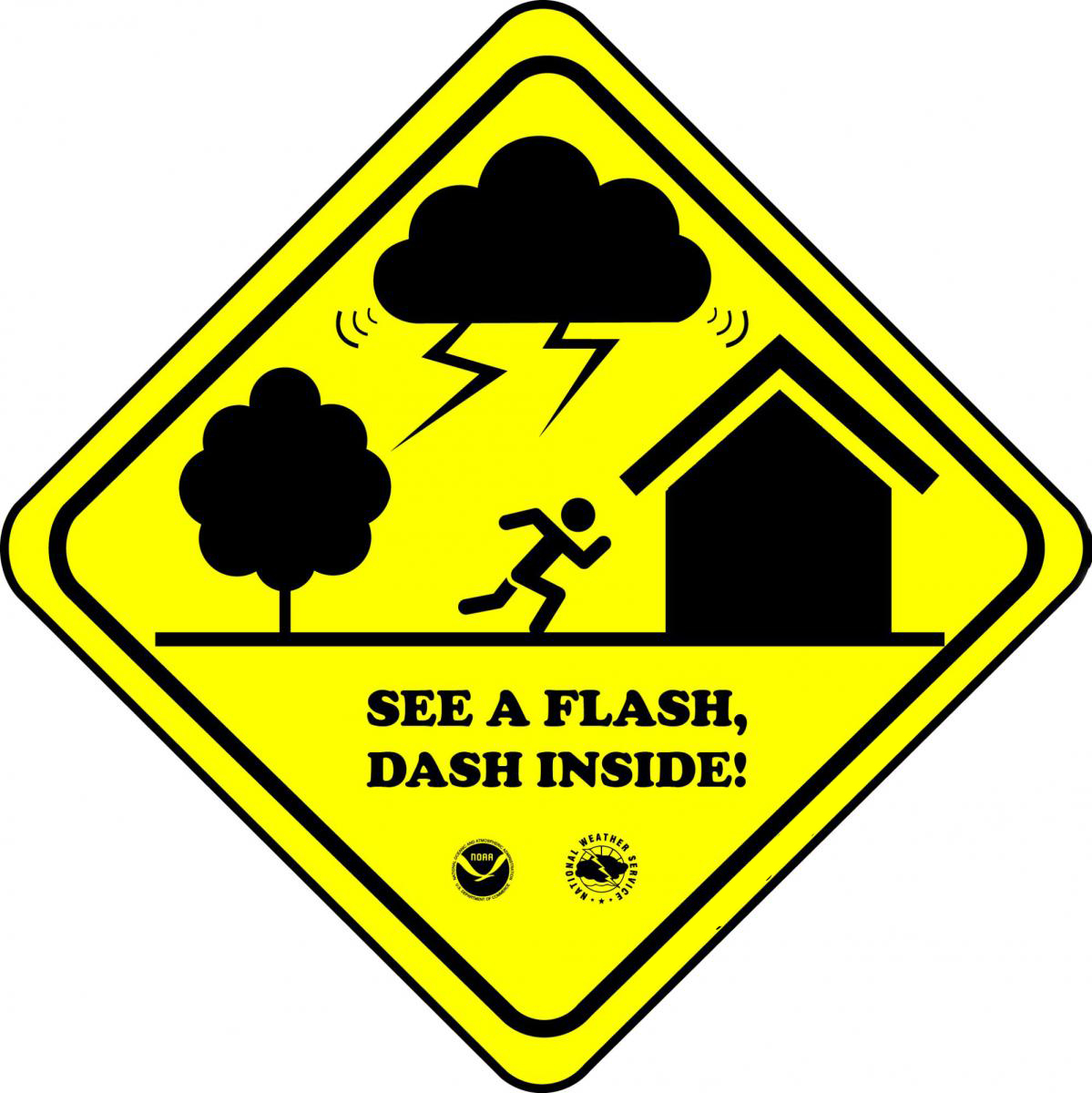
Facebook
Did you know that weather satellite GOES-16 houses the very first operational lightning mapper flown in geostationary orbit? GLM measures total lightning (in-cloud, cloud-to-cloud and cloud-to-ground) activity continuously over the Americas and adjacent ocean regions with near-uniform spatial resolution of approximately 10 km. goes-r.gov/spacesegment/glm.html
Twitter
GOES-16 houses the first operational lightning mapper flown in geostationary orbit. #WeatherReady goes-r.gov/spacesegment/glm.html
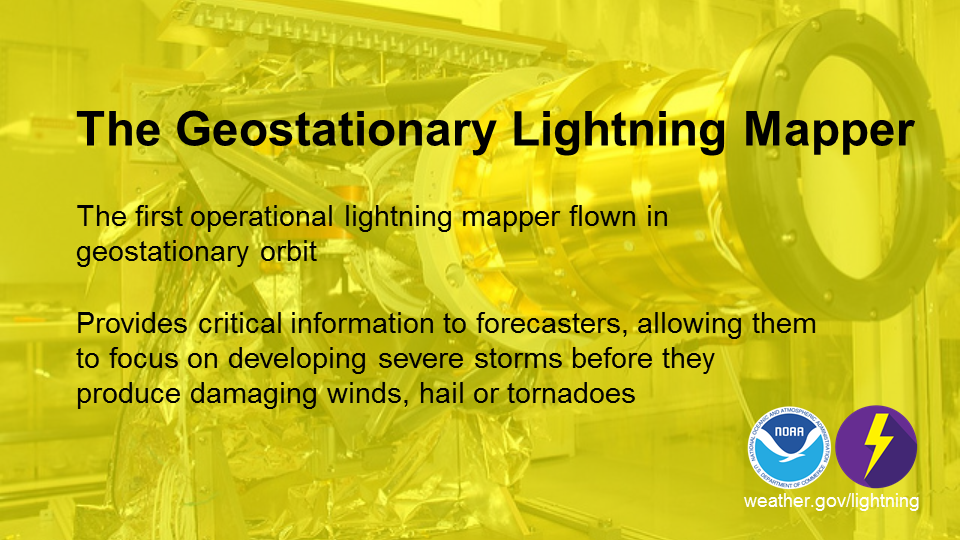
Facebook
Most lightning-related deaths occur when people are having fun outside. If you hear thunder or see lightning, immediately seek shelter in an enclosed building or vehicle. Remember, When Thunder Roars Go Indoors! weather.gov/safety/lightning #LightningSafety #SpringSafety
Twitter
Most lightning-related deaths occur when people are having fun outside. When Thunder Roars Go Indoors! weather.gov/safety/lightning #LightningSafety #SpringSafety
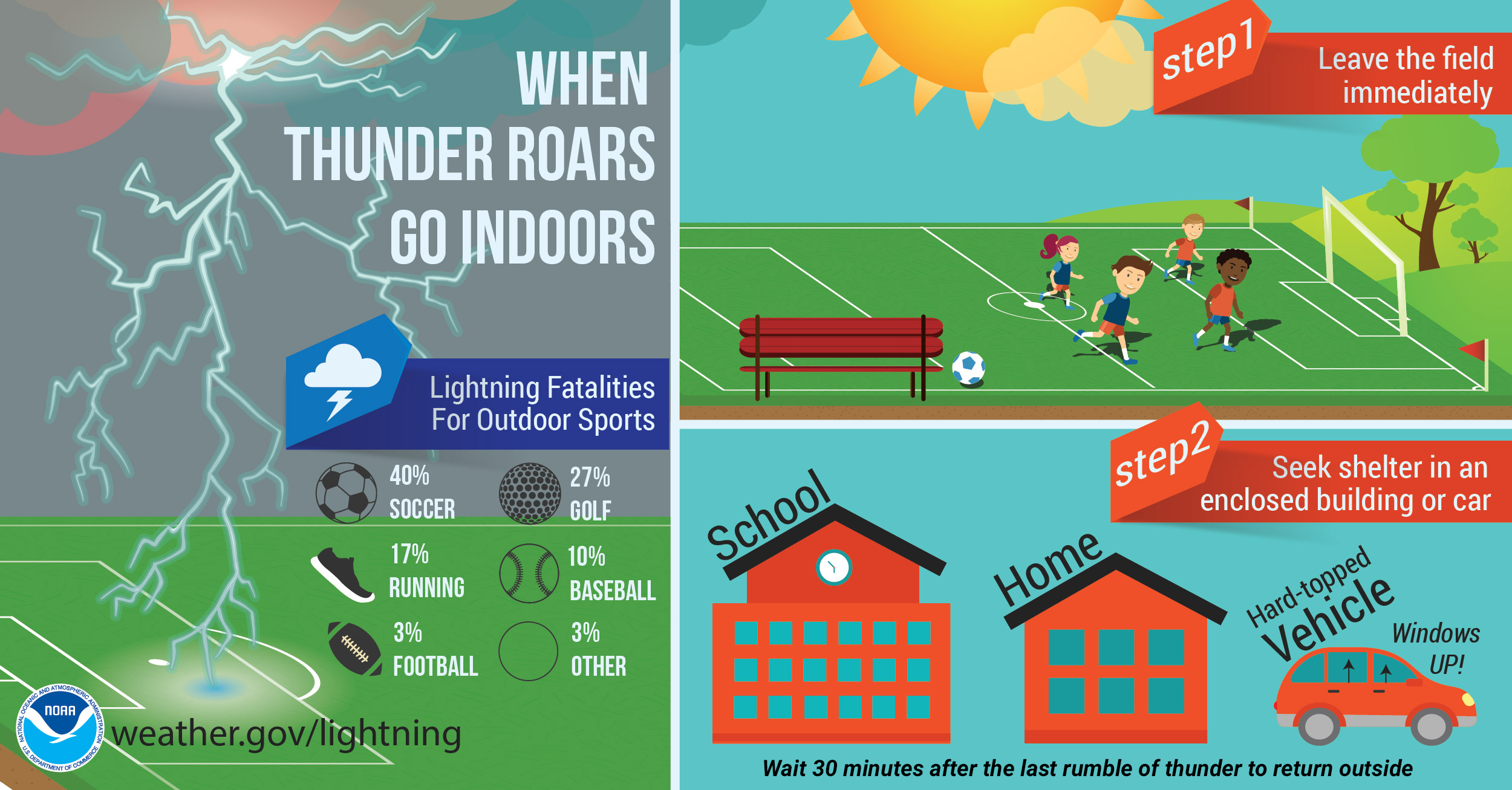
Facebook
Be aware of the dangers of lightning when going fishing. A lightning strike to a vessel can be destructive, especially if it results in a fire or loss of electronics. Boaters should use extra caution when thunderstorm conditions exist and have a plan of escape. weather.gov/safety/lightning
Twitter
Be aware of the dangers of lightning when going fishing. weather.gov/safety/lightning #WeatherReady
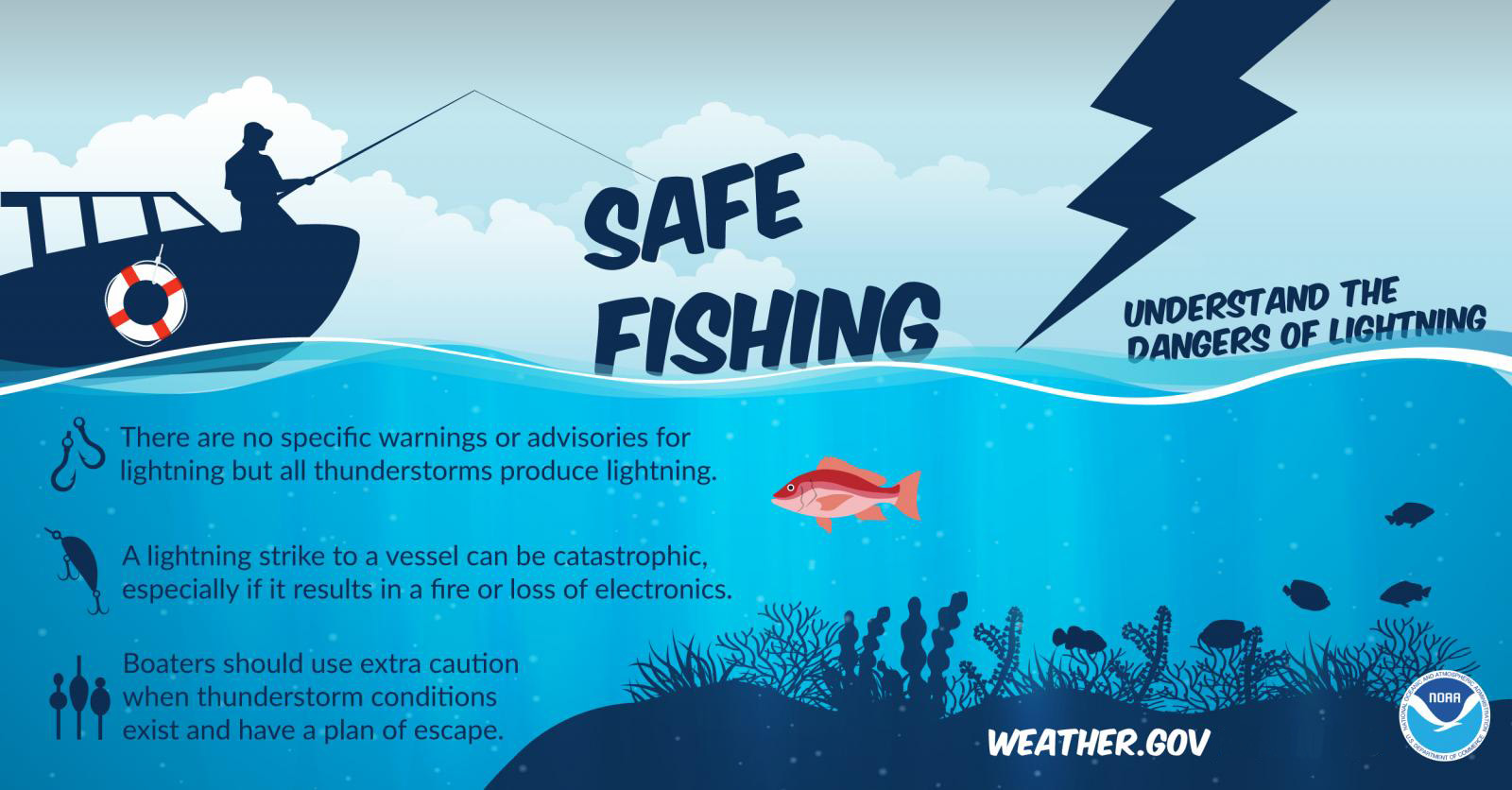
Facebook
Whether you’re attending a little league baseball game or a professional sporting event, the same rule applies: When Thunder Roars Go Indoors! It is never safe to be outside when lightning is in the area. weather.gov/safety/lightning
Twitter
Whether playing or watching sports outdoors, When Thunder Roars Go Indoors! weather.gov/safety/lightning #WeatherReady
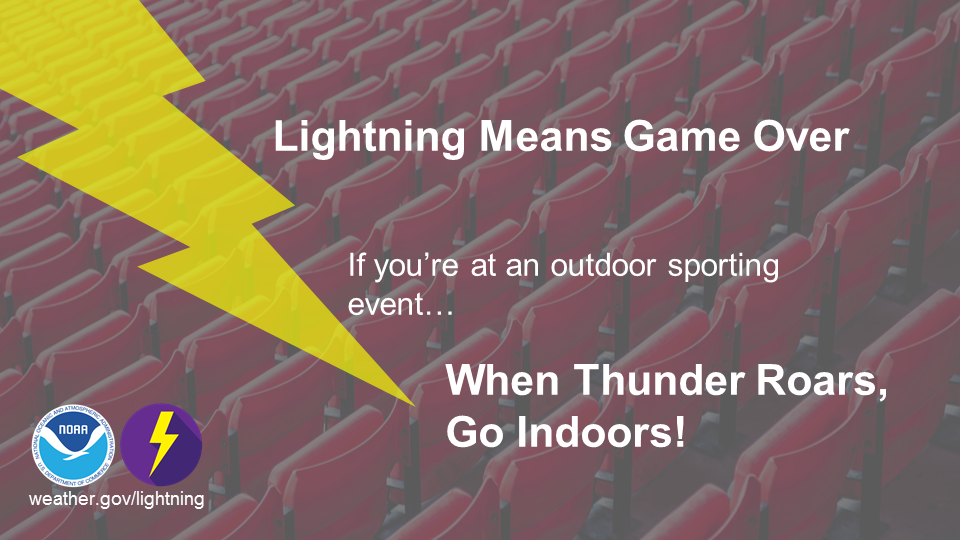
Facebook
Learn what to do, and what not to do, when it comes to lightning. weather.gov/safety/lightning
Twitter
Learn what to do, and what not to do, when it comes to lightning. weather.gov/safety/lightning #WeatherReady
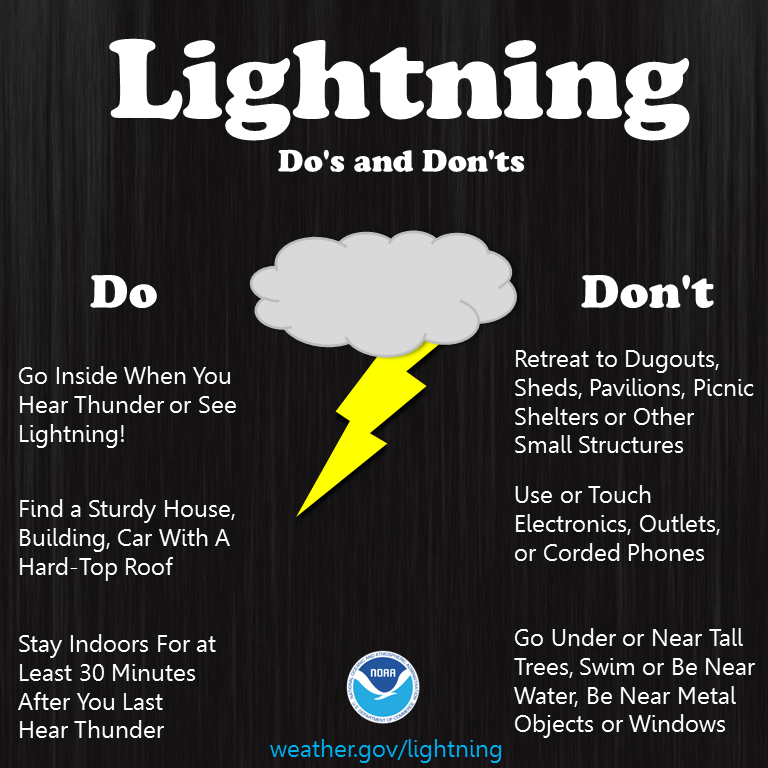
Facebook
20 people died in 2019 due to lightning. Don’t become a statistic! When Thunder Roars, Go Indoors! weather.gov/safety/lightning
Twitter
20 people died in 2019 due to lightning. Don’t become a statistic! When Thunder Roars, Go Indoors! weather.gov/safety/lightning #WeatherReady
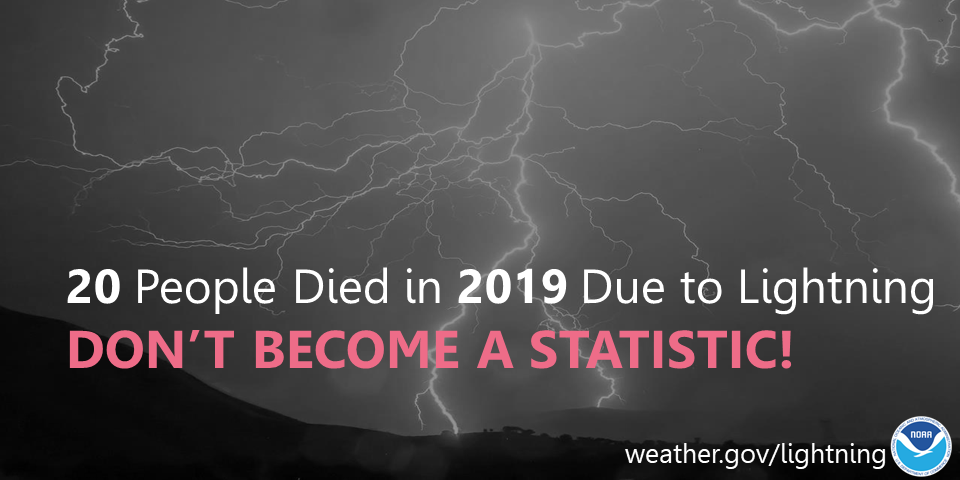
Facebook
Thunderstorms can be a mariner's worst nightmare. They can develop quickly and can produce strong wind, pounding rain, damaging hail, and deadly lightning. If you see clouds starting to pile up, thunderstorms are likely beginning to develop. Don’t wait until you hear thunder or see lightning. It’s best to head to port or safe shelter at the first sign of a developing storm. weather.gov/safety/safeboating-during
Twitter
Boaters: When storms start to form, head to port or safe shelter immediately! weather.gov/safety/safeboating-during #WeatherReady
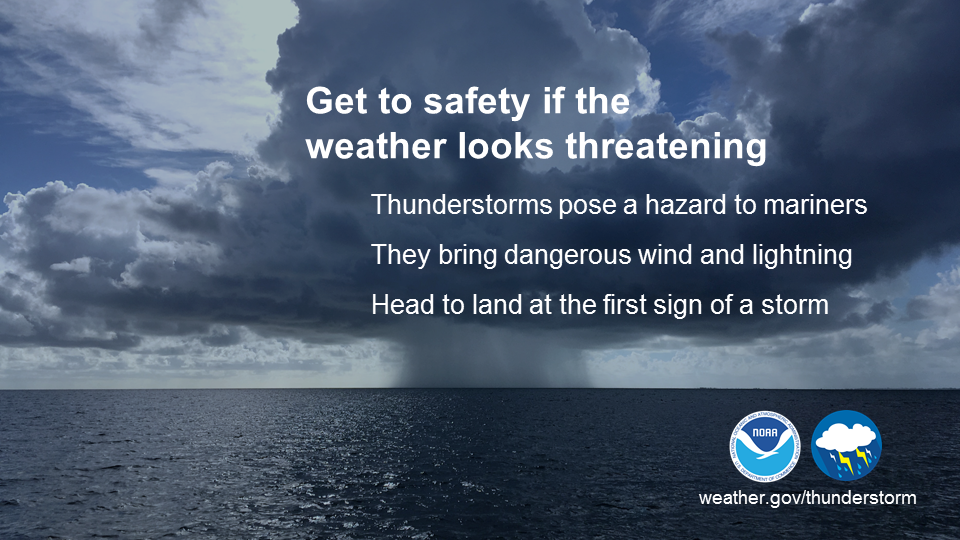
Facebook
Whether you’re spending the day at the beach or an afternoon at the pool, at the first sign of a storm, you should gather your things and seek shelter. By the time you hear thunder or see lightning, you’re already in danger. When Thunder Roars, Go Indoors! weather.gov/safety/lightning
Twitter
By the time you hear thunder or see lightning, you’re already in danger. weather.gov/safety/lightning #WeatherReady
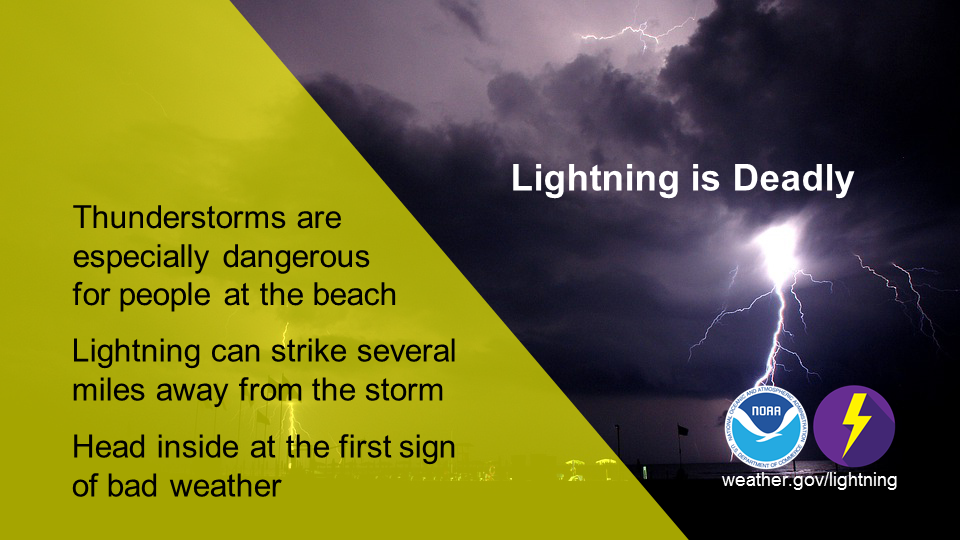
Facebook
Going camping? You are NOT safe from lightning in a tent. Avoid standing under trees. Find a sturdy building for shelter. If you can’t find one and are near your hard-topped vehicle, shelter in it with the windows up.
weather.gov/safety/lightning
Twitter
Camping? Know where to shelter during a thunderstorm. weather.gov/safety/lightning #WeatherReady
